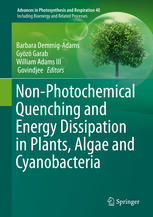

Most ebook files are in PDF format, so you can easily read them using various software such as Foxit Reader or directly on the Google Chrome browser.
Some ebook files are released by publishers in other formats such as .awz, .mobi, .epub, .fb2, etc. You may need to install specific software to read these formats on mobile/PC, such as Calibre.
Please read the tutorial at this link: https://ebookbell.com/faq
We offer FREE conversion to the popular formats you request; however, this may take some time. Therefore, right after payment, please email us, and we will try to provide the service as quickly as possible.
For some exceptional file formats or broken links (if any), please refrain from opening any disputes. Instead, email us first, and we will try to assist within a maximum of 6 hours.
EbookBell Team

4.8
84 reviewsHarnessing the sun’s energy via photosynthesis is at the core of sustainable production of food, fuel, and materials by plants, algae, and cyanobacteria. Photosynthesis depends on photoprotection against intense sunlight, starting with the safe removal of excess excitation energy from the light-harvesting system, which can be quickly and non-destructively assessed via non-photochemical quenching of chlorophyll fluorescence (NPQ). By placing NPQ into the context of whole-organism function, this book aims to contribute towards identification of plant and algal lines with superior stress resistance and productivity. By addressing agreements and open questions concerning photoprotection’s molecular mechanisms, this book contributes towards development of artificial photosynthetic systems. A comprehensive picture –from single molecules to organisms in ecosystems, and from leading expert’s views to practical information for non-specialists on NPQ measurement and terminology – is presented.